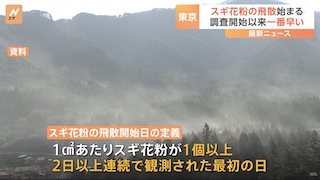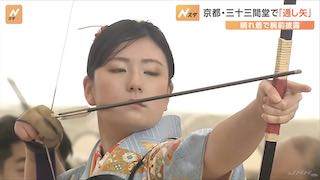Jan 30 (newsonjapan.com) - There are few symbols so ubiquitously connected to Japan as the cherry tree blossom.
Delicate pink petals gently floating in the wind are something we’ve all seen before. From films depicting the ancient beauty of traditional Japanese gardening to centuries-old wall art, the imagery of blossoming Sakura trees is both striking and iconic.
But that’s not the full extent of the symbolism of sakura trees. Let’s take a little look at the various ways in which the image of a cherry tree blossom is used.
History and Ritual
Unsurprisingly, the Sakura tree was not just randomly picked as Japan’s national symbol. The species itself is native in most of East Asia, but the Japanese were the first to attach symbolism. The earliest instances give the Sakura ritualistic importance as early as the 8th century. It was mainly about an ancient practice called “Hanami”, which comes down to drinking tea under a blossoming Sakura tree.
Throughout the middle ages, the practice spread throughout Samurai society. Either way, the flower’s breathtaking beauty and cloud-like appearance innately connect it to meditation and serenity. Moreover, some historical records date the first Hanami festivals to as early as 2nd century AD. Perhaps this long-standing tradition is why the cherry blossom is so intertwined with all things Japanese.
Obvious examples include the common Sakura motif found in all parts of Japanese art. From folk music, woodblock art, and even anime to motifs on kimonos and dishware – it’s as common as symbols get.
It should then come as no surprise that it’s often considered a patriotic symbol in terms of Japanese heritage. This was most notoriously widely used during World War 2 – most notably as a common decal on the sides of bomber planes. The image of Sakura flower petals falling suddenly gets a new, darker meaning. Here, however, another symbolic meaning comes to light – life and death.
Life, Death, and Rebirth
It’s important to understand that the symbolism is attributed to the flower, and not the tree. The cherry blossom is what’s most important as far as symbols go. Notably, the sakura trees blossom en masse¬, unlike a lot of other trees which work on more individual timelines. They all bloom at the same time, live at the same time, and wither and fall off the branches together.
This makes for some stunning imagery. It also paints a clear picture of how nature works – the circle of life and death. The beauty of the cherry blossom is that it’s transient, just like life itself. This can be quite a spectacle, as Sakura trees blossom in a “wave” starting from the south of Japan and moving north. This yearly event produces massive crowds and accurate forecasts of when to expect the blooming flowers.
This easily connects to an important Buddhism-influenced concept called Mono no aware. Translating to “the pathos of things”, it’s a uniquely Japanese concept referring to one’s awareness of transience. It’s all about noticing the beauty of nature and the world, yet being acutely aware that all things must come to an end. In broader terms, it’s about coming to terms with mortality and embracing the grinding wheels of destiny.
Luck
Destiny and karma mean different things to different people, but it’s easy to spot the relationship between fate and luck. Traditional Japanese philosophy dictates that there are no true coincidences. Whether we realize it or not, our lives move in a pre-ordained direction. Just like cherry flowers live in a cycle.
But that reasoning, there’s no such thing as luck – it’s merely destiny being “on your side.” We are grossly oversimplifying things, but that’s the flower’s connection to good luck. Even without the whole deterministic discussion, the cherry blossom has always represented wealth and, as such, good luck. Specifically, in Japan, it represents a bountiful harvest of rice in the months following spring.
This symbolism can, in turn, be found in other aspects of life.
Take the casino industry as an example. Similar to how casino games like to display symbols like the lucky number 7 or the four-leafed clover, sakura flowers can be found all over Pachinko machines. Moving into the 21st century, we can find a similar pattern in online casinos.
There are numerous slot games dedicated to the imagery of Sakura trees – like the one conspicuously named Sakura Fortune Slot. Discussion about the use of sakura symbolism in online casinos would be quite a long one, however. For now, we’ll leave all things casino-related to the experts over at CasinoChick.com. This site is all about discovering the best online casino deals and giving perceptive insight into casino gaming from a women’s perspective. Also, they often dive into different themes in casino games, including this one we’re dealing with here.
Conclusion
This is by no means the full story – the image of the cherry blossom has been used for centuries. However, by now you should at least have an idea of what sakura flowers symbolize and why.















